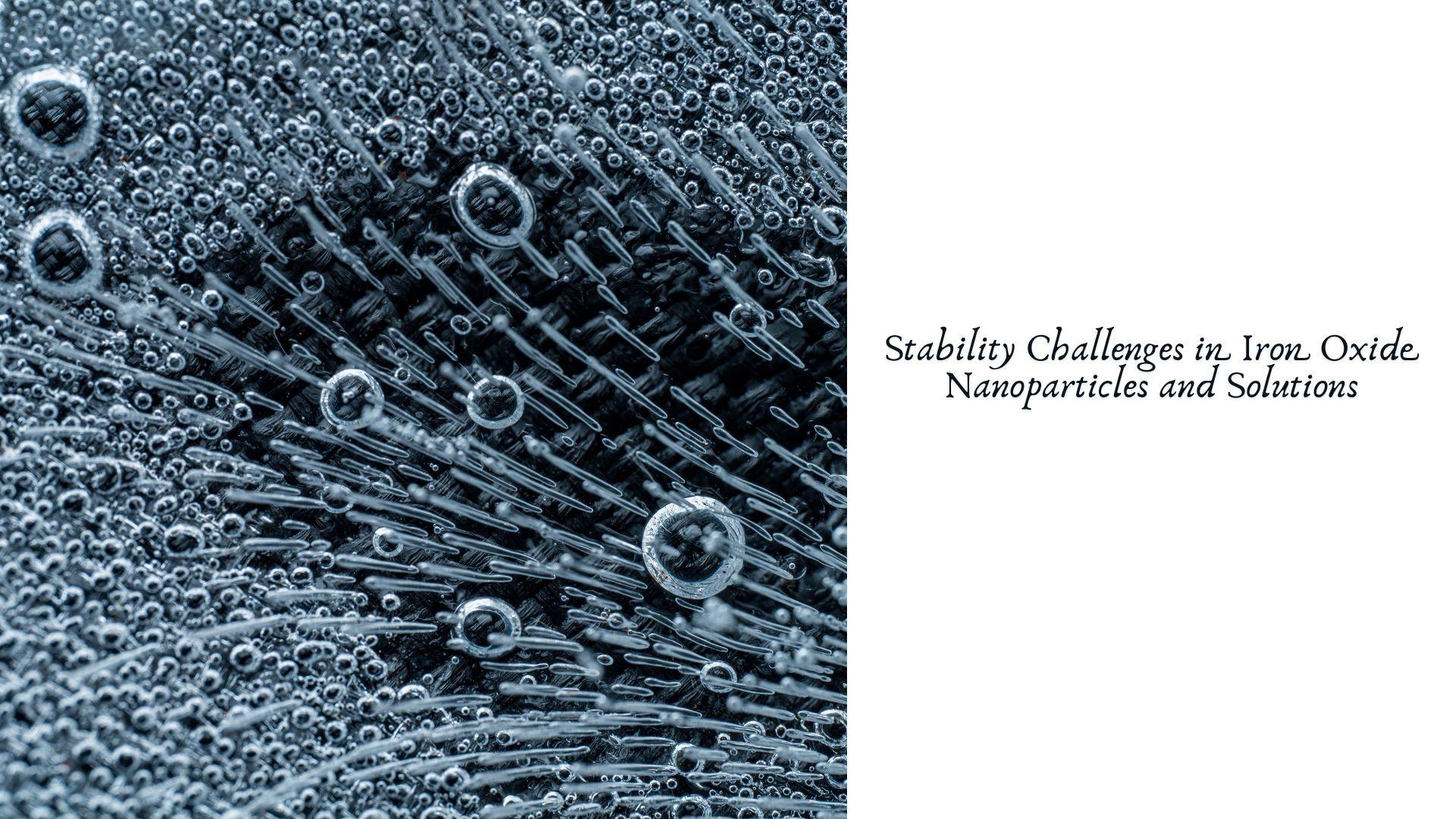Stability Challenges in Iron Oxide Nanoparticles and Solutions

Introduction
Iron oxide nanoparticles (IONPs) have become increasingly significant in fields ranging from biomedicine and catalysis to environmental remediation and data storage due to their magnetic, electronic, and catalytic properties. However, despite their broad application potential, one of the most pressing challenges that researchers and industries face is ensuring the long-term stability of these nanoparticles. The stability of IONPs is a critical factor that influences their performance, biocompatibility, and shelf-life.
This article explores the key stability challenges associated with iron oxide nanoparticles and highlights innovative solutions and strategies to overcome them.
Understanding Stability in Iron Oxide Nanoparticles
The stability of IONPs refers to their ability to retain structural integrity, size, dispersion, surface characteristics, and functional performance over time under various environmental and physiological conditions. Stability issues can be broadly categorized into:
-
Colloidal Stability: Resistance to aggregation or sedimentation in suspensions.
-
Chemical Stability: Resistance to oxidation, dissolution, or transformation.
-
Thermal Stability: Ability to maintain phase and structure at elevated temperatures.
-
Biological Stability: Performance consistency in biological environments.
Each form of instability can lead to reduced efficacy, toxicity, or failure in applications, especially in sensitive domains such as drug delivery or magnetic hyperthermia.
Major Stability Challenges in IONPs
Aggregation and Agglomeration
Challenge: Due to high surface energy and magnetic interactions, IONPs tend to cluster, leading to agglomeration and sedimentation in solution. This affects their dispersibility and surface reactivity.
Impact: Reduced bioavailability, altered magnetic behavior, poor catalytic activity, and limited cellular uptake.
Oxidation and Phase Transformation
Challenge: IONPs, especially magnetite (Fe₃O₄), can oxidize to maghemite (γ-Fe₂O₃) or further degrade under environmental or physiological conditions.
Impact: Alters magnetic properties, decreases reactivity, and affects long-term reliability in applications such as magnetic resonance imaging (MRI).
Surface Charge Instability (Zeta Potential)
Challenge: Variations in pH or ionic strength of the medium can destabilize the surface charge of nanoparticles, leading to precipitation or coagulation.
Impact: Loss of colloidal stability, altered cellular interactions, and inconsistent drug delivery.
Leaching and Ion Release
Challenge: In some environments, IONPs can dissolve or release iron ions (Fe²⁺/Fe³⁺), especially under acidic conditions.
Impact: Can lead to toxicity in biological systems and poor material performance in sensing or catalytic systems.
Thermal Instability
Challenge: Elevated temperatures can cause sintering, grain growth, or phase transitions in IONPs.
Impact: Changes in surface area, catalytic activity, and magnetic properties.
Solutions to Improve Stability
To overcome the challenges listed above, researchers have developed a variety of chemical, physical, and biological strategies.
Surface Functionalization
Solution: Coating IONPs with polymers, surfactants, or inorganic shells such as silica (SiO₂), gold (Au), or carbon.
-
Examples: PEGylation (polyethylene glycol), dextran, chitosan.
-
Benefits: Enhances steric stabilization, improves biocompatibility, reduces aggregation, and prolongs shelf-life.
Core-Shell Structures
Solution: Encapsulating IONPs within a protective shell to prevent oxidation and chemical degradation.
-
Examples: Fe₃O₄@SiO₂, Fe₃O₄@Au, Fe₃O₄@ZnO.
-
Benefits: Provides barrier against oxidation, tailors surface chemistry, and facilitates functionalization.
pH and Ionic Buffering
Solution: Designing nanoparticles that maintain stability across a wide pH range using zwitterionic coatings or by incorporating buffering agents.
-
Examples: Phosphonate or carboxylate ligands.
-
Benefits: Maintains zeta potential and prevents charge neutralization-induced aggregation.
Magnetic Shielding and Thermal Annealing
Solution: Use of non-magnetic coatings or heat treatments to stabilize crystal structure and minimize magnetic dipole interactions.
-
Benefits: Preserves magnetic properties and structural integrity during high-temperature applications.
Doping and Alloying
Solution: Incorporating foreign atoms such as Co, Zn, or Mn into the iron oxide lattice.
-
Benefits: Enhances thermal and magnetic stability, inhibits phase transformation, and improves catalytic behavior.
Use of Stabilizing Solvents and Dispersants
Solution: Employing solvents and surfactants that provide electrostatic or steric stabilization in colloidal formulations.
-
Examples: Tween-80, CTAB, oleic acid.
-
Benefits: Prevents sedimentation and allows long-term dispersion in aqueous or organic media.
Applications Enhanced by Stability Solutions
Stable IONPs unlock potential in critical areas:
-
Biomedicine: Improved MRI contrast agents, targeted drug delivery, and hyperthermia therapy.
-
Catalysis: Consistent activity and recyclability in redox and photocatalytic processes.
-
Environmental Remediation: Enhanced longevity and reactivity in pollutant degradation.
-
Energy Storage: Better performance in lithium-ion batteries and fuel cells.
-
Sensors and Electronics: Long-term reliability in magnetic and biosensing applications.
Conclusion
While iron oxide nanoparticles hold immense promise across multiple industries, their practical deployment is often hindered by various stability challenges. From aggregation to chemical degradation, these issues can significantly reduce their functionality. However, with the advent of advanced surface engineering, core-shell technologies, smart coatings, and nanocomposite strategies, the stability of IONPs can be greatly improved.
Future research is likely to focus on multifunctional coatings, stimuli-responsive stabilizers, and green synthesis methods that offer both performance and sustainability. As solutions to stability challenges continue to evolve, iron oxide nanoparticles will remain at the forefront of nanotechnology innovation.
- Fashion
- Art
- Causes
- Crafts
- Dance
- Drinks
- Film
- Fitness
- Food
- Games
- Gardening
- Health
- Home
- Literature
- Music
- Networking
- Other
- Party
- Religion
- Shopping
- Sports
- Theater
- Wellness
